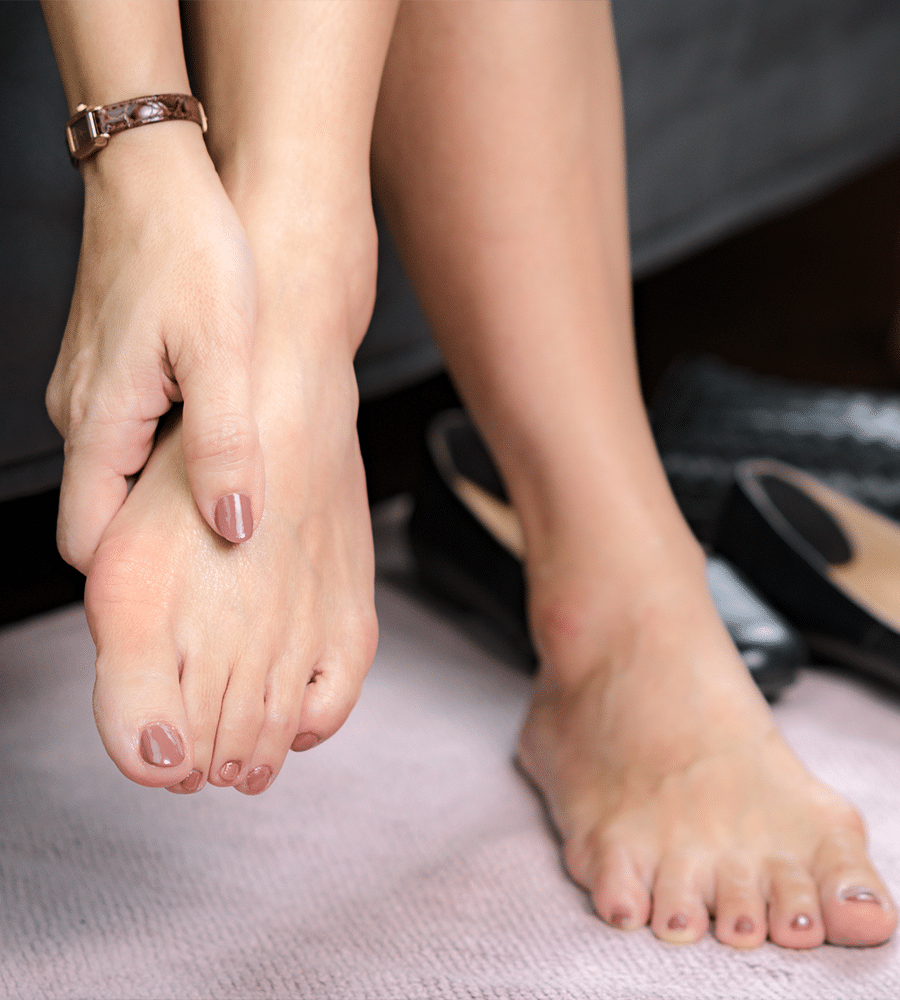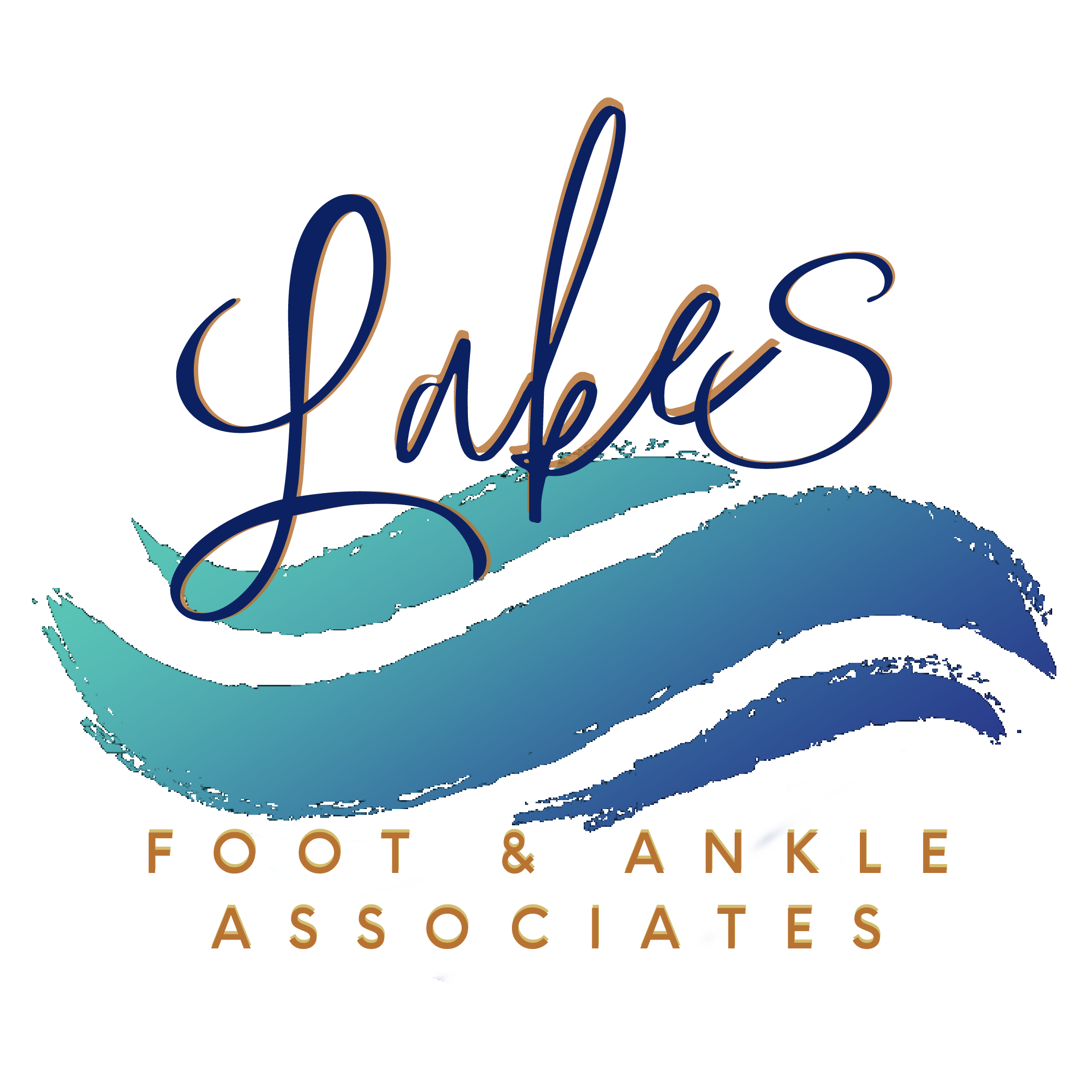Commerce Twp’s Leaders in Advanced Bunion Treatment
Bunions are among the most common toe deformities. By some estimates, as many as 1 in 4 American adults may have one. Bunions aren’t just cosmetic concerns, however—they can also be painful and debilitating, getting in the way of cherished hobbies like running and hiking. Serious bunions can even make simple, day-to-day tasks difficult.
Whether you’re just beginning to notice a misalignment in your big toe or the deformity is advanced, Lakes Foot & Ankle Associates can help. Seeking out help before symptoms become noticeable gives you more treatment options to choose from—so don’t hesitate to give our team a call or reach out online today!

What Is a Bunion?
A bunion is a type of foot deformity caused when the joint at the base of your big toe becomes destabilized and misaligned. When this joint is unstable, the big toe begins to move toward the neighboring second toe. At the same time, the joint appears to enlarge as a bony bump forms along the inside of the foot at the base of the toe. This bump may get larger and more swollen with time.
Reddened, swollen skin over the joint at the base of the big toe tends to be the first obvious sign that a bunion is forming. You may not feel much pain at this point, but bunions do progressively get worse, which is why it’s so important to seek treatment as soon as you notice symptoms.
Broadly speaking, bunions can be managed conservatively or reconstructed surgically. The less severe your bunion is, the more likely conservative management can help you. If you wait until the pain becomes unbearable, chances are surgery will be your only option.
Bunion Symptoms Explained
- Bulging bump on the outside of your big toe at the base
- Bulging bump on the outside of your little toe (bunionette)
- Intermittent to constant pain, swelling, & soreness
- Pain when wearing certain shoes or participating in specific activities
- Stiffness & arthritis in the big toe joint
- Restricted motion
- Corns, calluses, or other skin irritations
Bunion Self-Care: How a Podiatrist Can Help
The primary goal of conservative treatment is to enable you to enjoy your favorite activities and perform day-to-day tasks without pain or restriction. The bunion won’t go away or even get smaller, but if it is not yet severe, it may not noticeably impair your lifestyle.
As part of your personalized management plan, we may recommend one or more of the following approaches:
- Wearing wider, more comfortable shoes with appropriate cushioning and support
- Using taping or splinting to hold the toe in better alignment
- Using bunion pads to reduce friction and pressure and protect sensitive skin
- Wearing padded shoe inserts or custom orthotics
- Taking over-the-counter medications or using ice
- Removing corns and calluses
Bunion FAQs
We can’t always identify a precise cause or set of causes for your bunion. However, the following factors are known to increase your risk:
- Genetics. Bunions tend to run in families.
- Foot types. Certain foot structures and shapes (e.g. flat feet) may place relatively more pressure on the big toe joint, leading to destabilization and a greater risk of bunions.
- Footwear. Frequently wearing shoes that are too narrow, insufficiently cushioned, or that place too much weight on the front of your feet (e.g. high heels) may trigger, aggravate, or accelerate a bunion.
- Injuries. Your toe joint may become destabilized due to a specific traumatic injury, such as a stubbed or jammed toe, or simply as the result of long-term wear and tear.
Bunion correctors may provide pain relief for mild cases and/or prevent the bunion from getting worse. However, they do not realign the bones of the toes. It’s always best to visit a podiatrist before trying bunion correctors to ensure they will be a helpful and meaningful part of your personal management plan.
When bunions are severe, surgery may be inevitable for restoring a healthy and active lifestyle. The goal of surgery is to restore normal appearance and function to the feet. Most patients make a return to full activity within a few months.
At Lakes Foot & Ankle Associates, our goal is always to get you back on your feet, in regular shoes, and doing your regular activities as quickly as possible. If surgery is necessary, we’ll be your partners in optimizing recovery!
Yes, bunions can be hereditary. You may inherit issues with your foot’s biomechanics (foot structure) that make you more prone to developing bunions. These include flat feet, low arches, and loose tendons/joints.
How We Can Support Bunion Management
Get Advanced Bunion Support in Commerce Twp
Although they are often associated with seniors and women, the truth is that anyone at any age can develop a bunion—men, women, athletes, office workers, and even teenagers. If you’re ready to find effective relief for your bunion pain—or to prevent surgery as long as possible—Lakes Foot & Ankle Associates is here to help. Don’t wait until a bunion is debilitating to get help. Start maintaining your active lifestyle with healthy, happy feet today!
Give Lakes Foot and Ankle Associates a call today. Call (248) 360-3888 today to schedule your appointment, or send us a message online!
